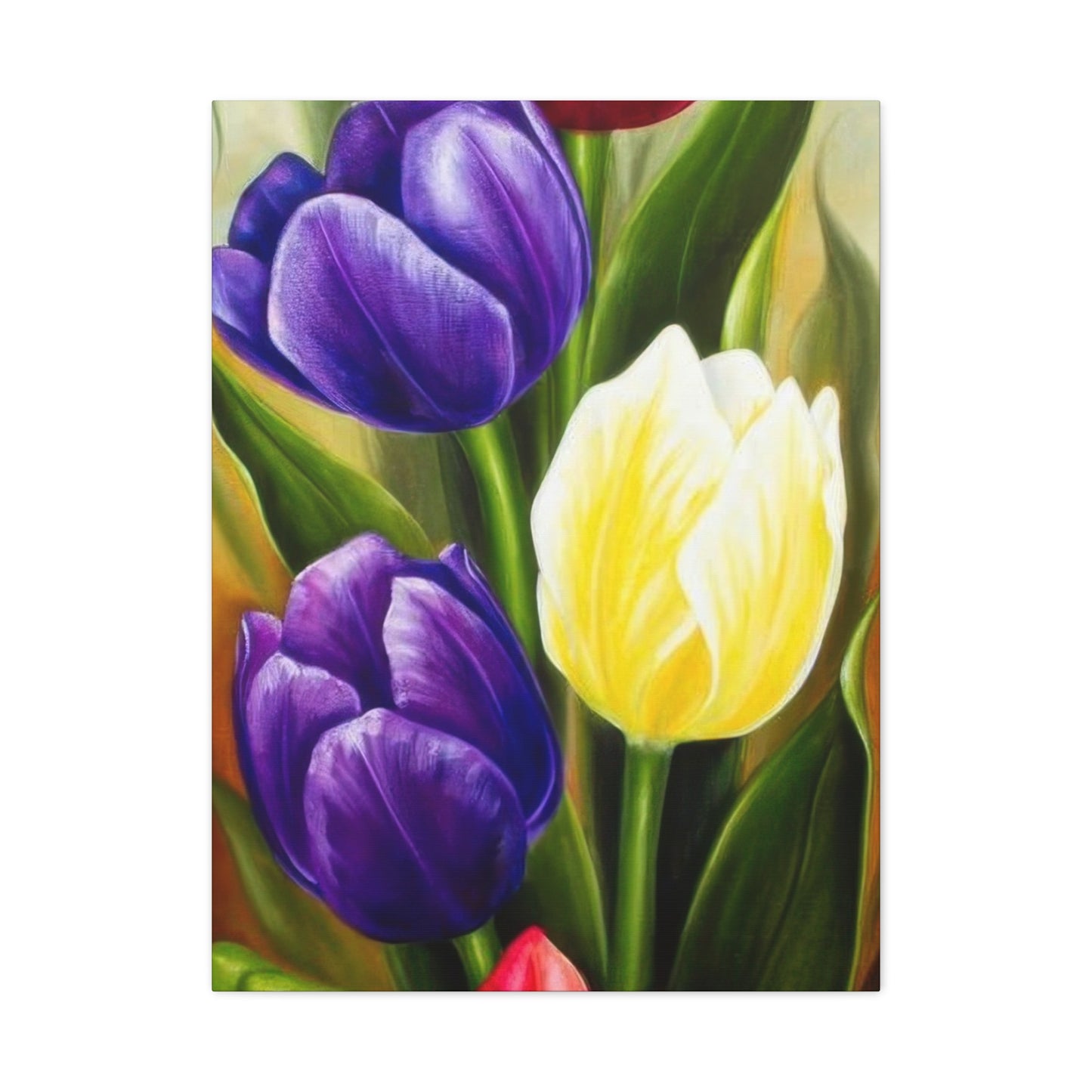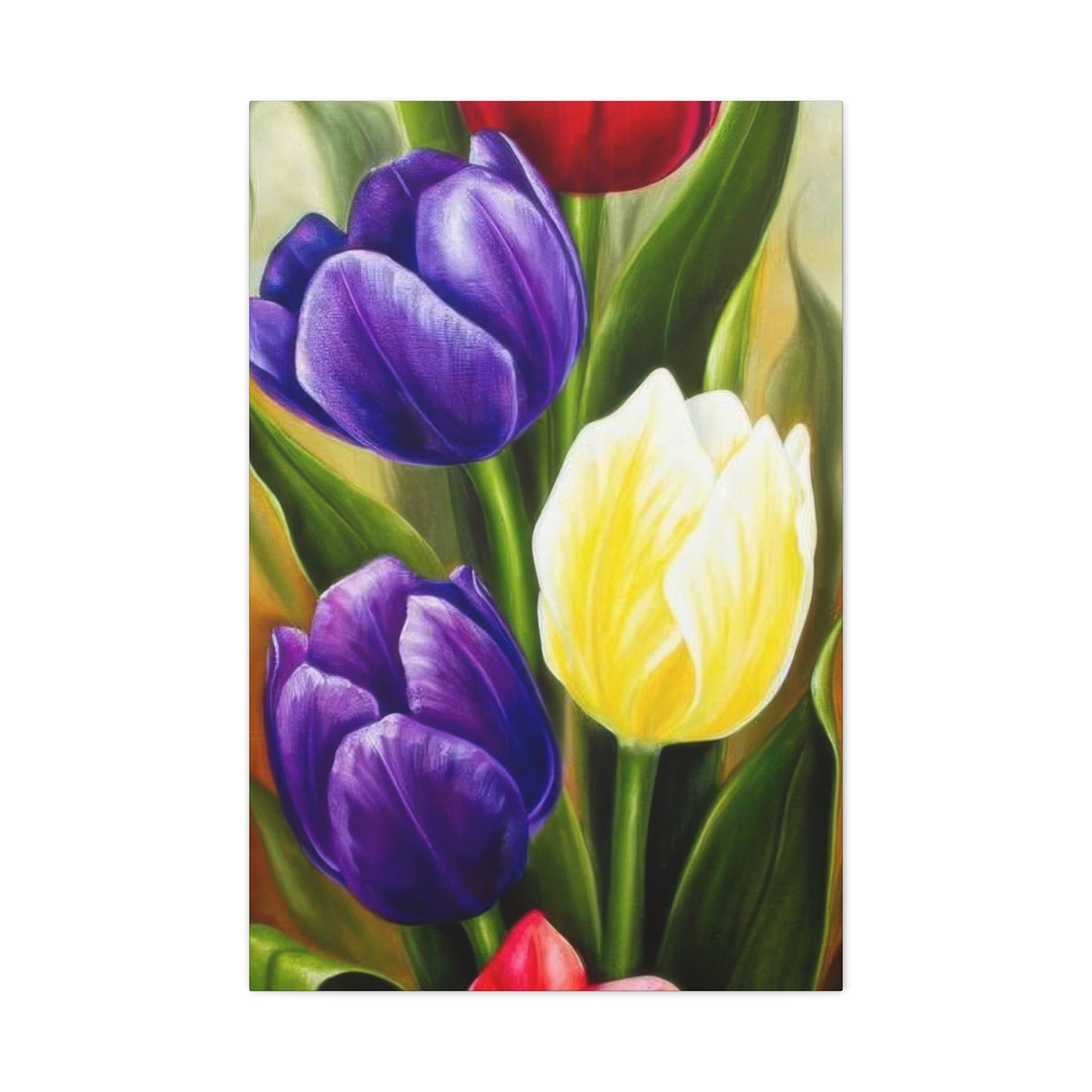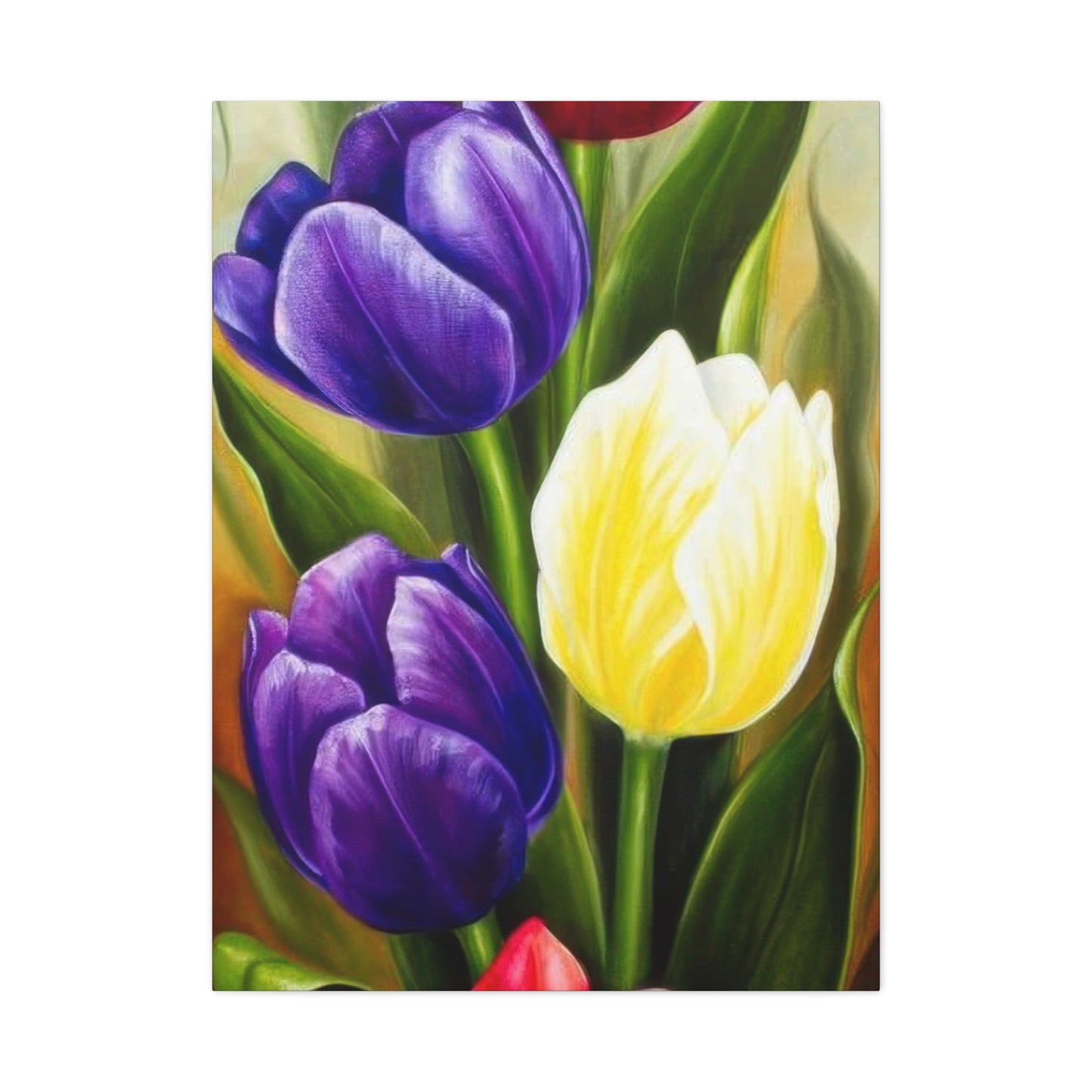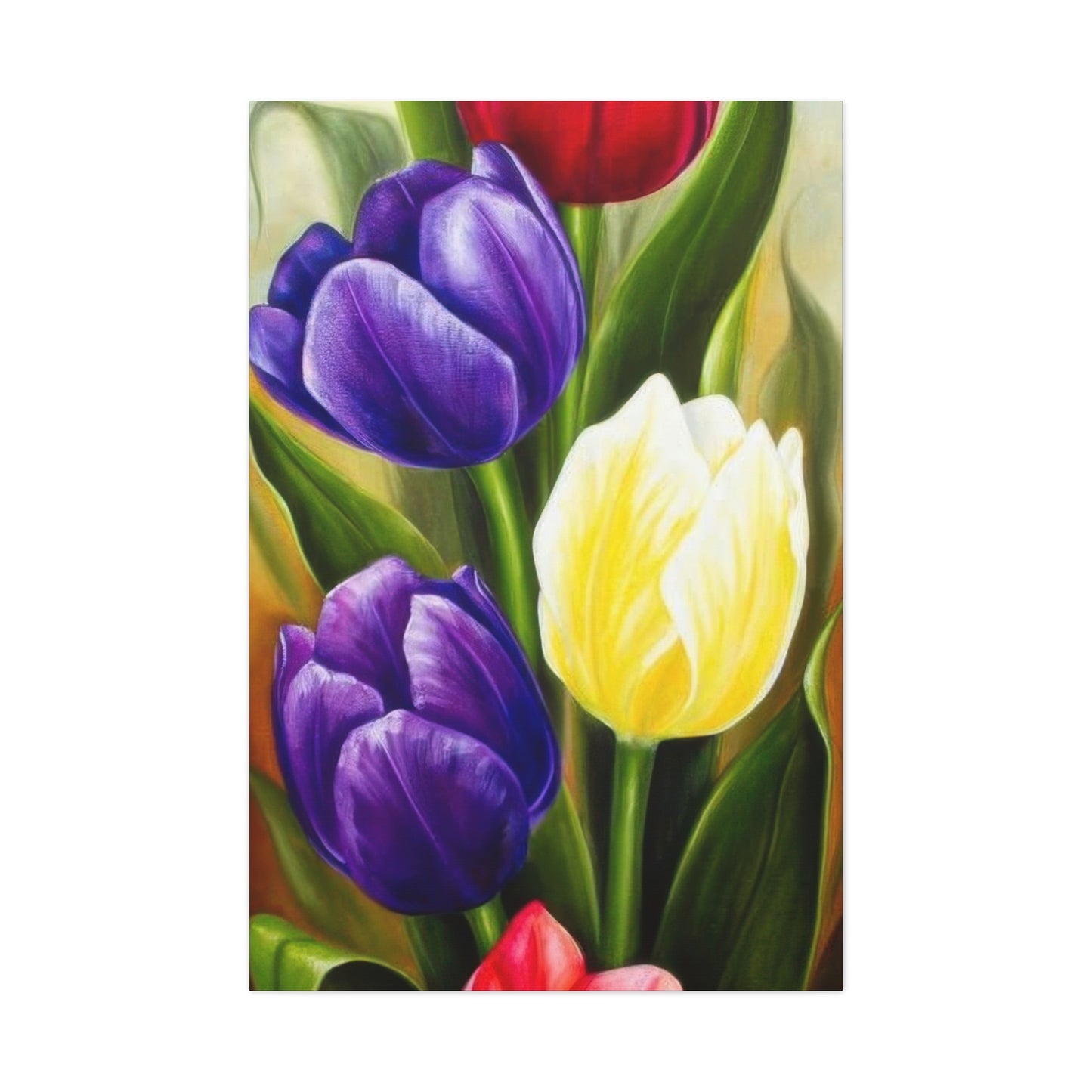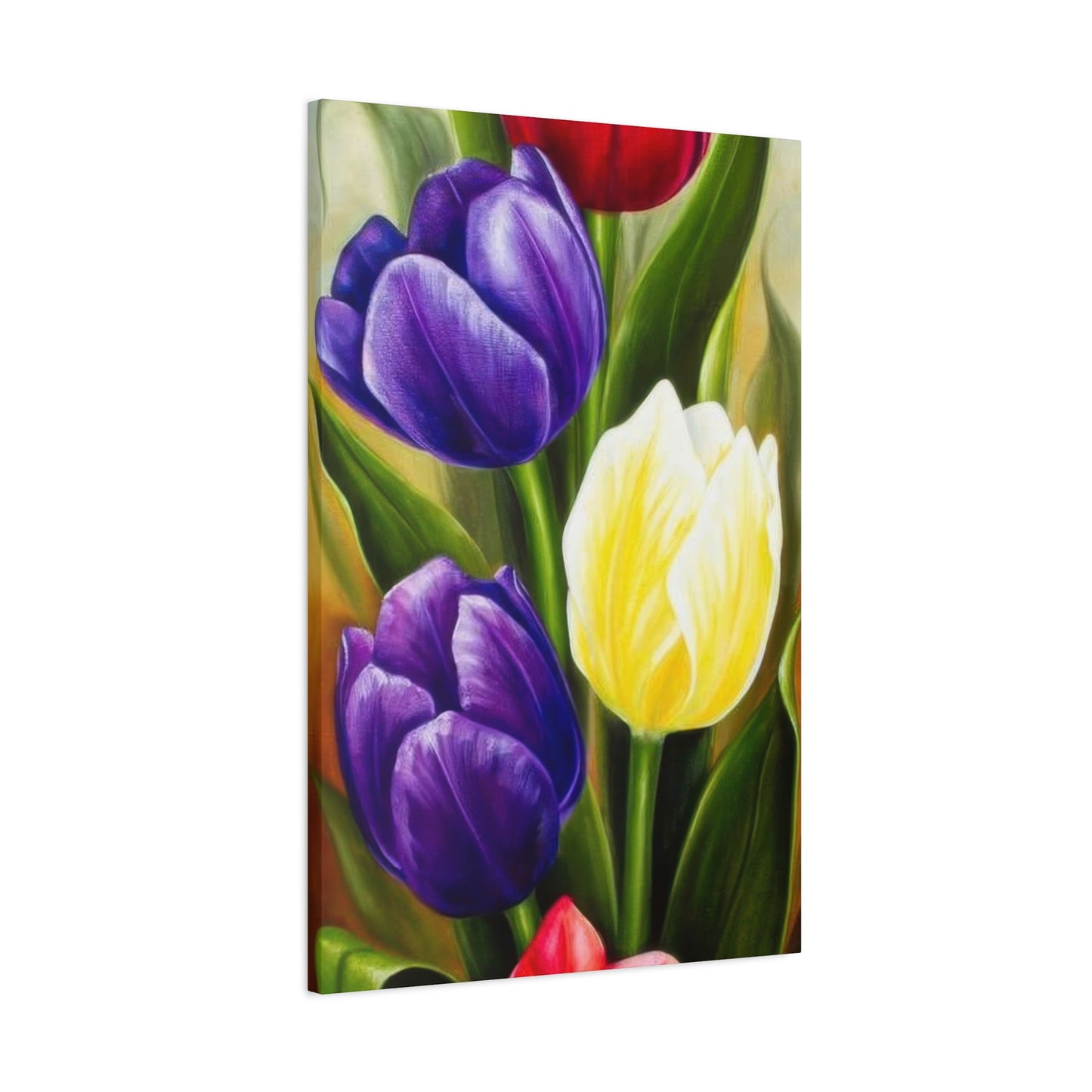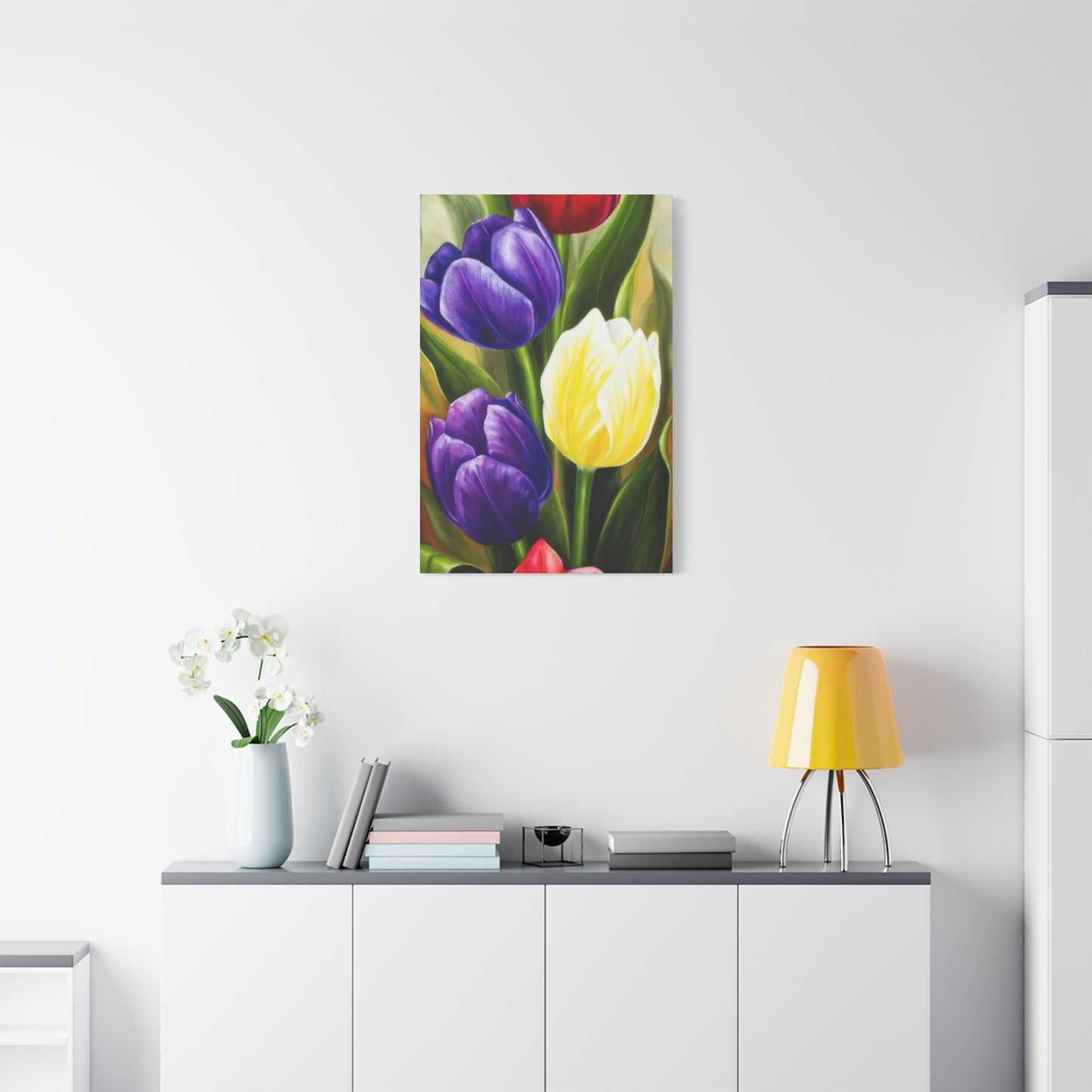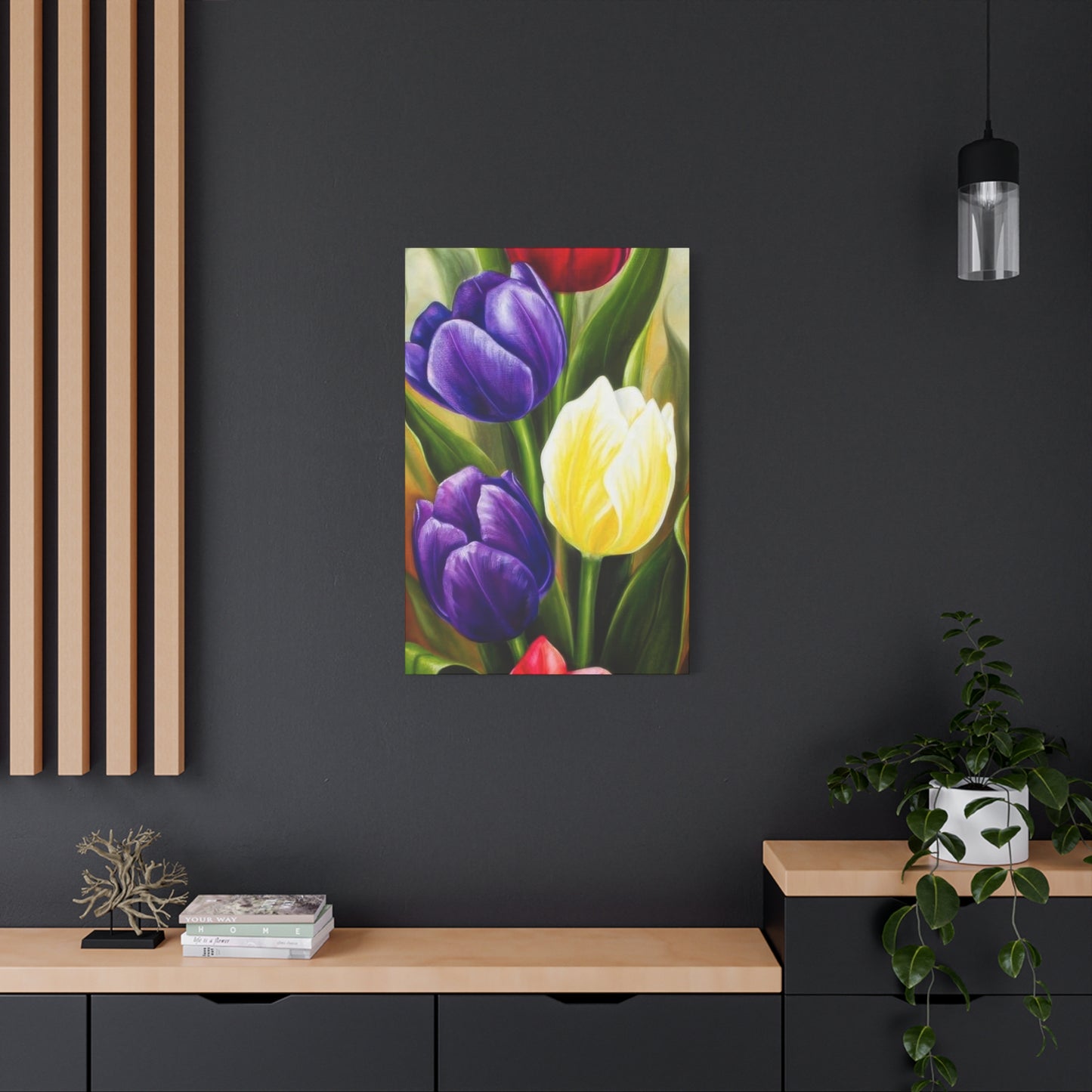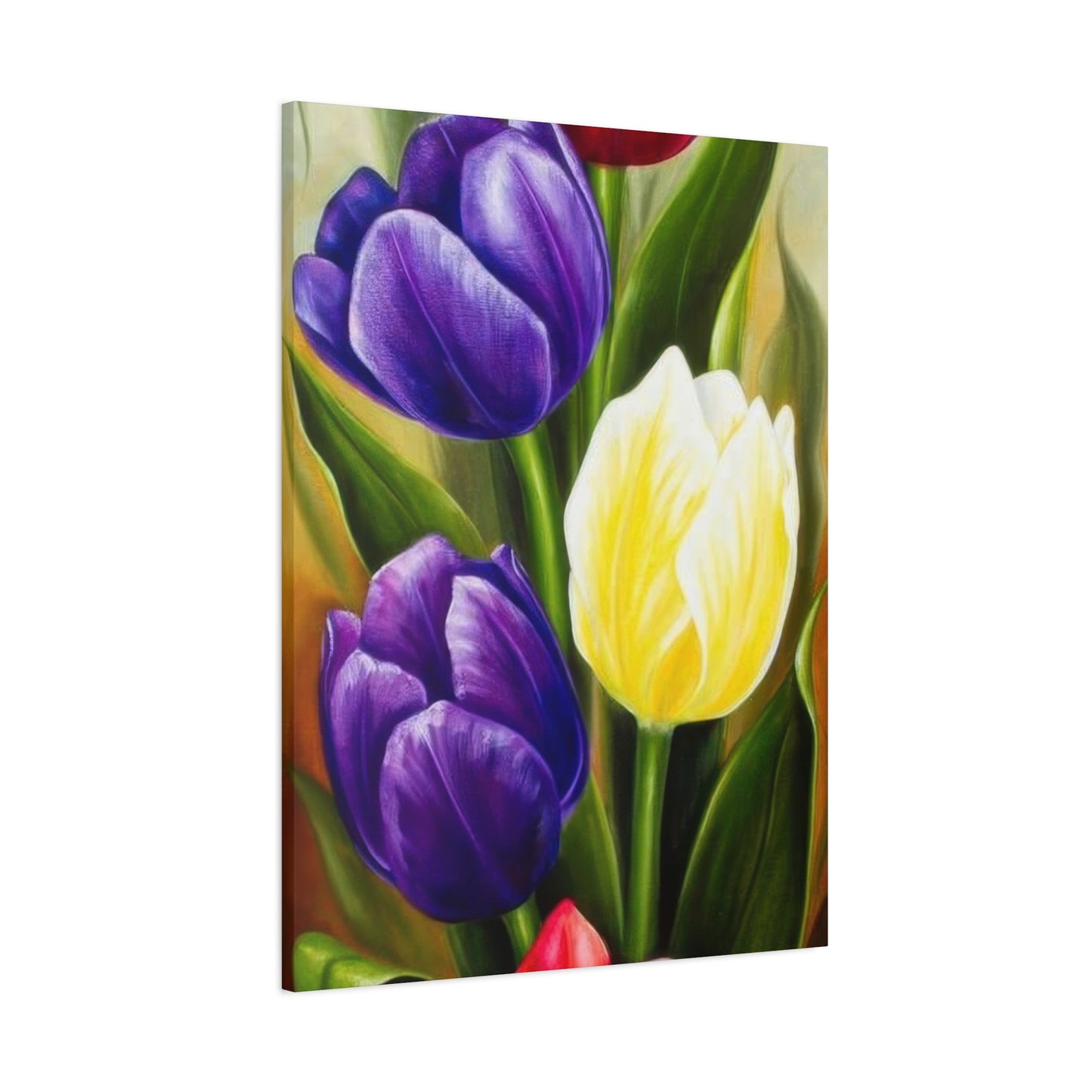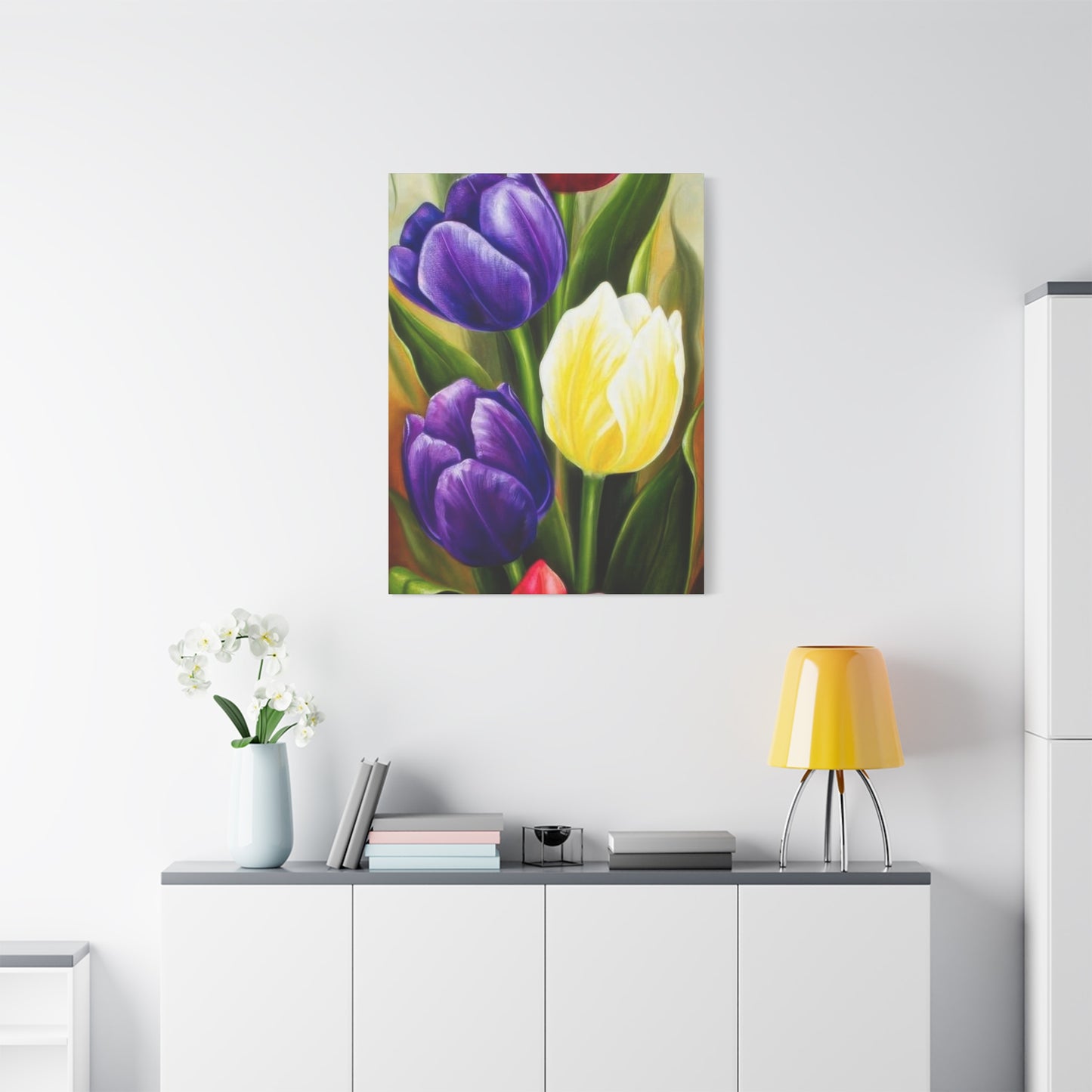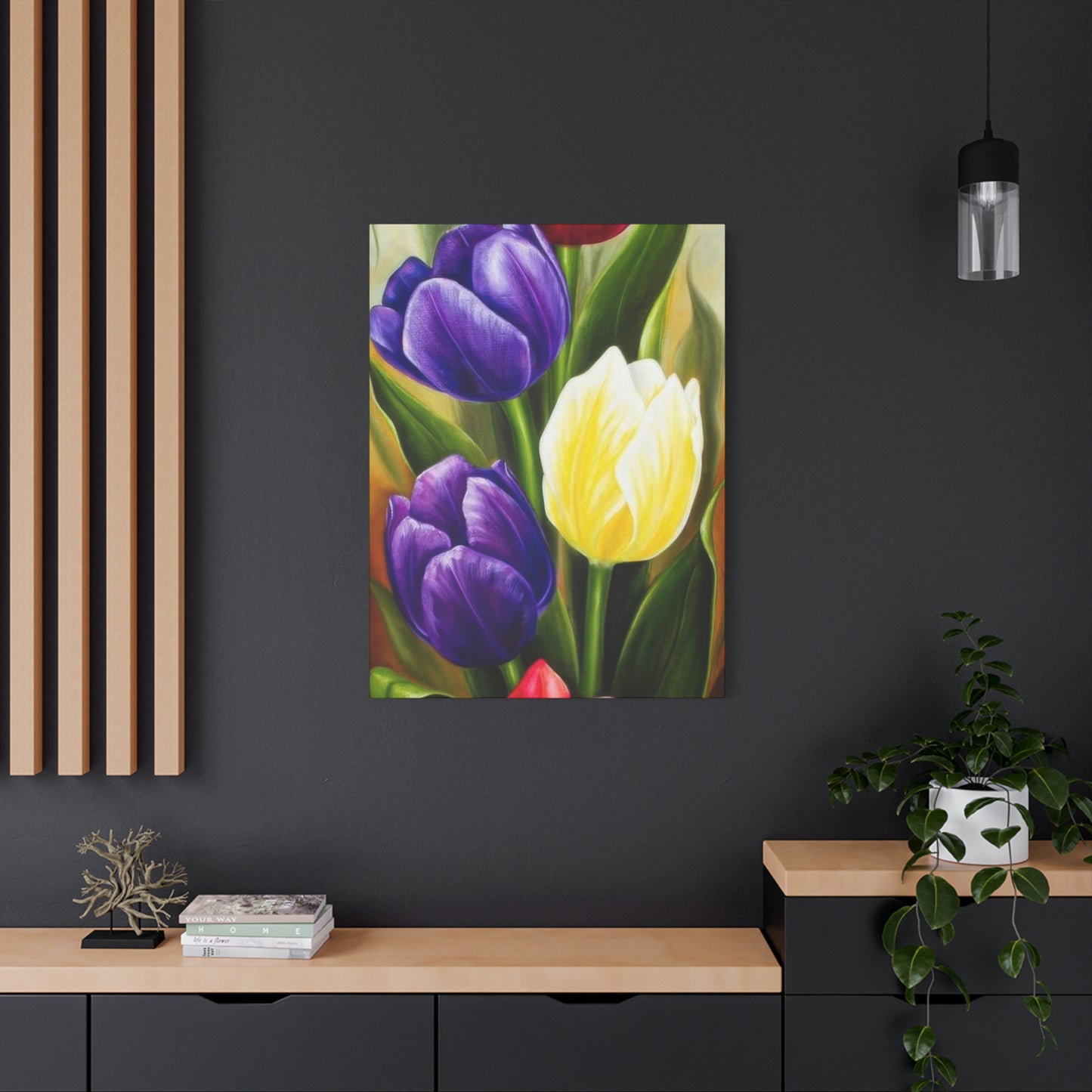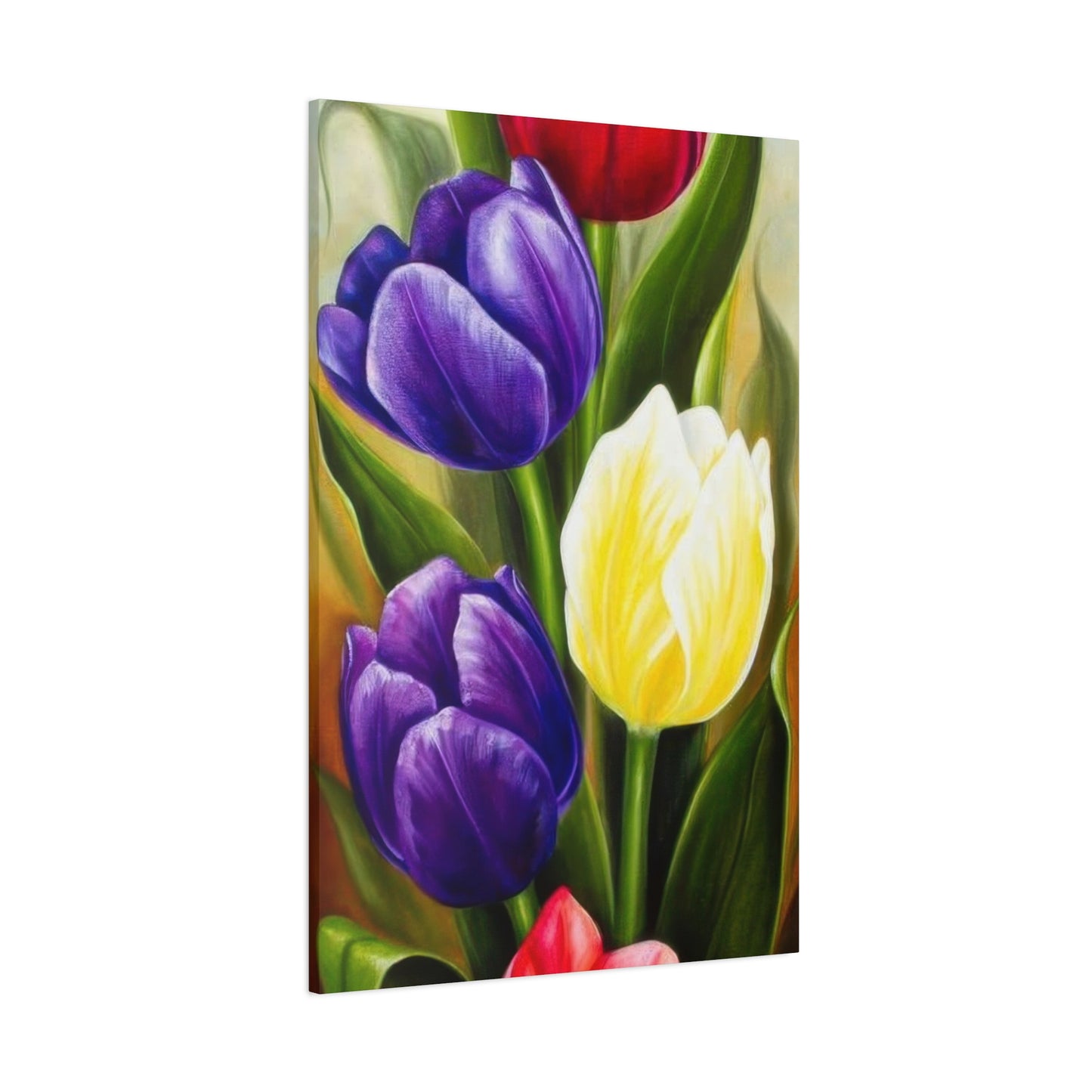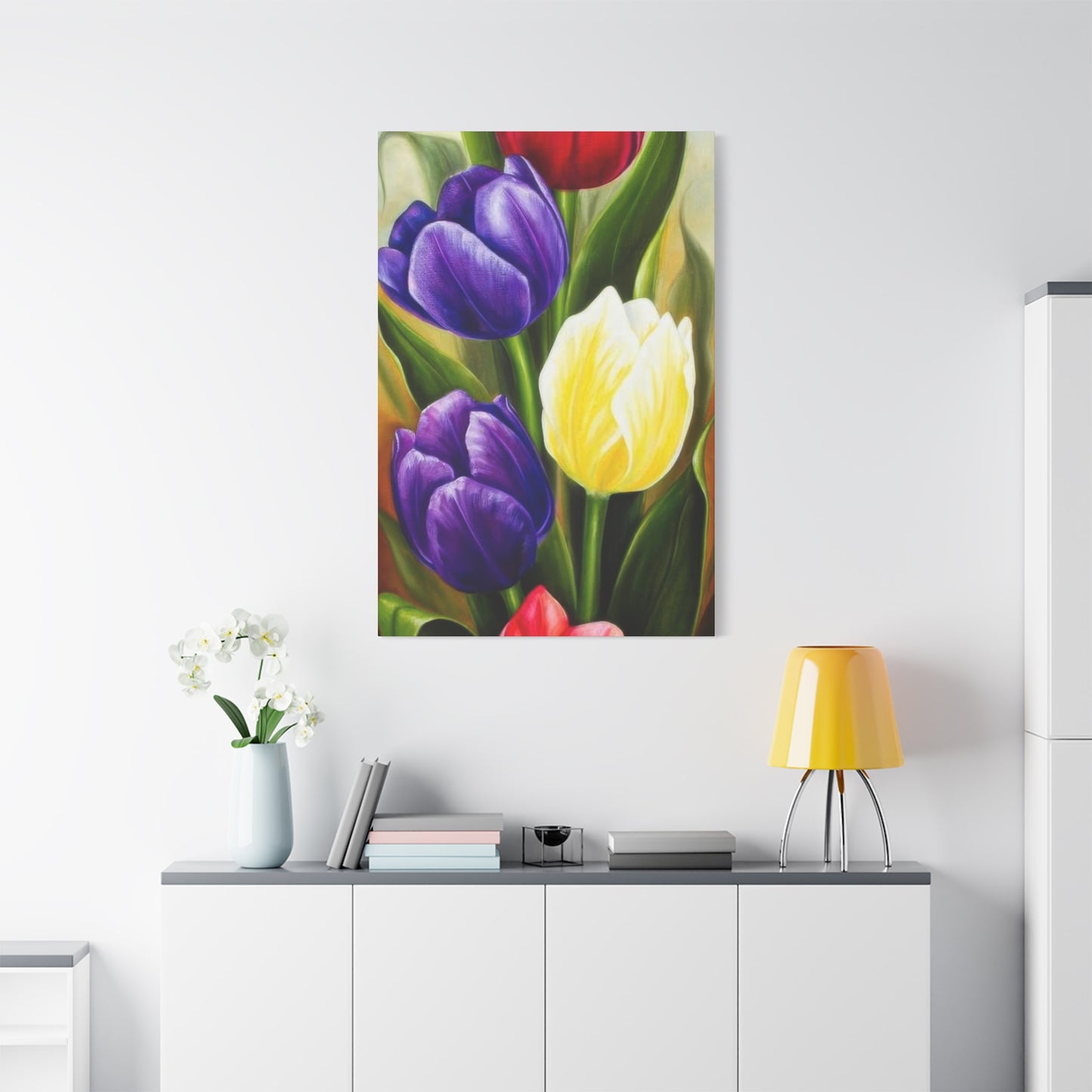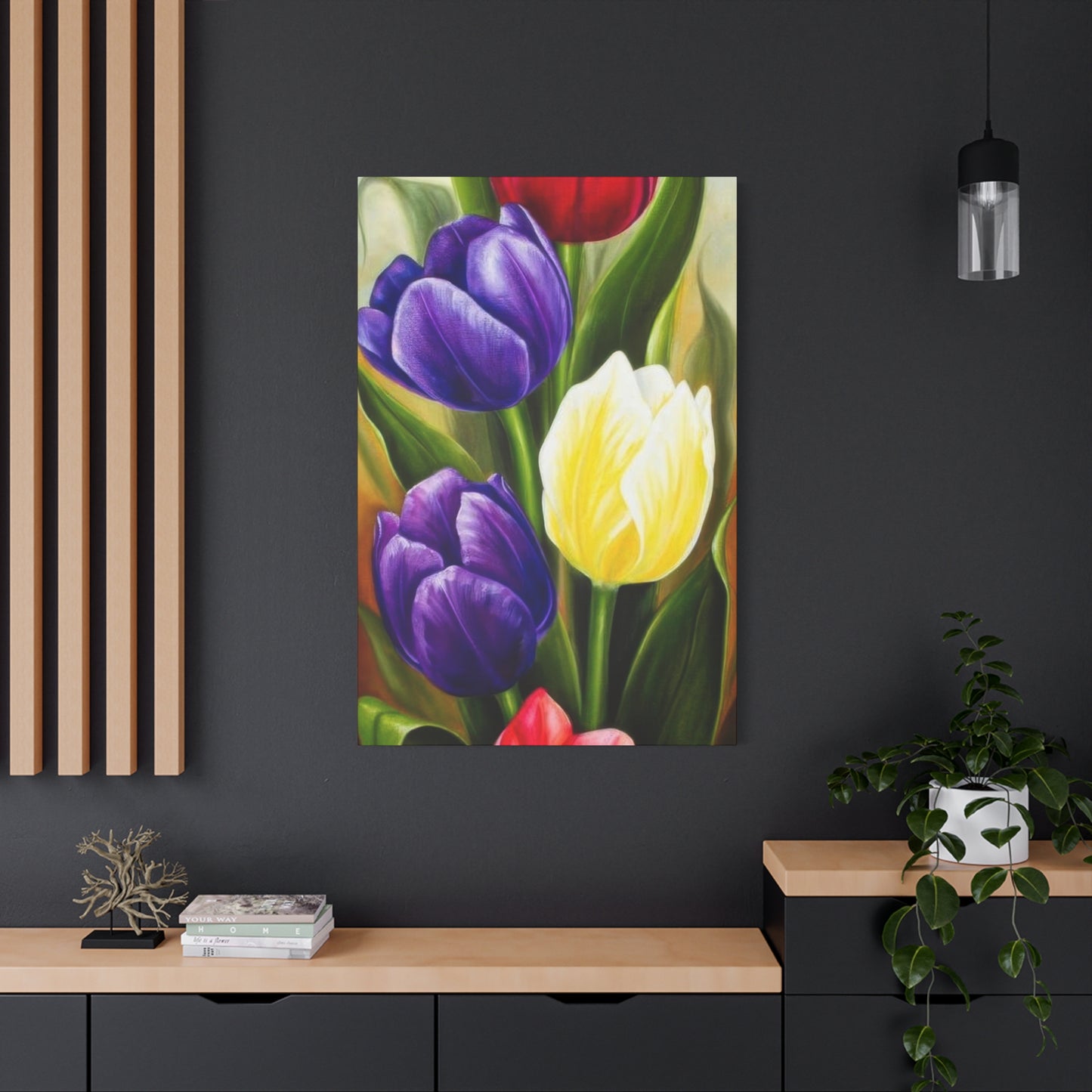Layering Flowers Fresh Blooms Wall Art with Complementary Home Décor and Textures
Transforming your living space with botanical artwork brings an eternal sense of renewal and vitality into your home environment. When you integrate springtime-inspired decorative pieces featuring blossoms and petals onto your walls, you create an atmosphere that celebrates the rejuvenating power of nature throughout the entire year. This approach to interior decoration goes beyond simple aesthetics, touching upon the psychological benefits of connecting with natural elements even when you're indoors.
The magic of spring-themed botanical displays lies in their ability to capture the ephemeral beauty of nature's most celebrated season. These artistic representations freeze moments of natural perfection, allowing you to experience the joy of blooming gardens regardless of the weather outside your windows. Whether you live in an urban apartment with limited access to green spaces or simply want to extend the feeling of spring beyond its brief annual appearance, wall-mounted botanical artwork provides the perfect solution.
Incorporating these decorative elements into your interior design strategy creates visual focal points that draw the eye and spark conversation. The organic shapes and natural color progressions found in botanical imagery provide a refreshing contrast to the geometric lines and manufactured materials that dominate most modern living spaces. This juxtaposition creates visual interest while maintaining a sense of harmony and balance within the room.
The psychological impact of surrounding yourself with representations of nature cannot be overstated. Research in environmental psychology consistently demonstrates that exposure to natural imagery reduces stress levels, improves mood, and enhances overall wellbeing. By selecting wall decorations that feature the vibrant energy of spring blossoms, you're not just decorating your space but actively creating an environment that supports mental and emotional health.
When considering how to bring the essence of spring into your home through wall decorations, think about the specific qualities that make this season so universally beloved. The soft pastels of early blooms, the energetic brightness of mid-spring flowers, and the lush richness of late spring gardens all offer different emotional tones and visual effects. Your personal response to these variations will guide you toward selections that truly resonate with your individual taste and create the atmosphere you desire in your living space.
The versatility of spring-themed botanical artwork allows it to complement virtually any decorating style, from traditional to contemporary, from minimalist to maximalist. This adaptability makes it an excellent choice for anyone looking to refresh their interior without committing to a complete design overhaul. A single well-chosen piece can serve as the catalyst for a room transformation, or multiple coordinated pieces can create a cohesive gallery wall that becomes the defining feature of your space.
Bright Florals to Refresh Any Room
Infusing your interior spaces with luminous botanical imagery creates an instant transformation that breathes new life into tired or outdated rooms. The strategic placement of artwork featuring radiant petals and vibrant blossoms can completely alter the energy and atmosphere of any environment, from intimate bedrooms to expansive living areas. This decorating approach offers one of the most effective and accessible methods for achieving dramatic visual impact without undertaking expensive renovation projects.
The power of brilliantly colored botanical displays lies in their ability to command attention while remaining inherently welcoming and approachable. Unlike some forms of abstract or modern art that might feel intimidating or cold, representations of nature's beauty possess an immediate accessibility that appeals to people across different ages, backgrounds, and aesthetic preferences. This universal appeal makes them particularly valuable in shared spaces where multiple individuals with varying tastes need to feel comfortable and welcomed.
When selecting pieces to rejuvenate your rooms, consider the existing color scheme and the mood you want to establish. Warm-toned botanical artwork featuring oranges, yellows, and reds energizes spaces and creates feelings of warmth and enthusiasm. These choices work particularly well in areas designated for social interaction, creative work, or physical activity. The stimulating nature of these warm hues encourages engagement and conversation, making them ideal for living rooms, dining areas, and home offices where productivity and interaction are priorities.
Conversely, cooler-toned botanical displays showcasing blues, purples, and greens promote calmness and contemplation. These selections prove especially effective in spaces designed for relaxation and rest, such as bedrooms, reading nooks, and meditation areas. The soothing qualities of cool colors help reduce mental chatter and physical tension, facilitating the transition from active daytime states to peaceful evening relaxation.
The size and scale of your botanical artwork significantly influences its impact on the room. Oversized pieces create dramatic focal points that anchor the entire design scheme, while smaller works offer opportunities for creating interesting groupings and gallery walls. When working with limited wall space, a single large-scale piece often provides more visual impact than several small ones, eliminating the cluttered feeling that can result from too many individual elements competing for attention.
Texture considerations also play an important role in how botanical artwork interacts with your space. Canvas prints offer a traditional, slightly textured surface that adds depth and dimension to the imagery. Metal prints provide a sleek, contemporary feel with enhanced color saturation and a luminous quality that seems to emit light. Framed paper prints behind glass create a more formal, gallery-like presentation that works well in sophisticated settings. Each material choice contributes differently to the overall atmosphere, so matching the medium to your design goals ensures cohesive results.
Lighting represents another crucial factor in maximizing the refreshing effect of botanical wall decorations. Natural light enhances the vibrancy of colors and creates dynamic shadows that change throughout the day, adding an element of living variation to static images. Artificial lighting options, including picture lights, track lighting, and strategic placement near lamps, allow you to highlight your botanical artwork even after sunset. The interplay between light and imagery creates an ever-changing display that keeps your space feeling fresh and engaging.
Vibrant Flower Prints for Cheerful Interiors
Creating an uplifting atmosphere within your home becomes remarkably simple when you incorporate energetic botanical reproductions that celebrate the exuberant colors found in nature's most joyful creations. These dynamic visual elements serve as constant reminders of life's beauty and abundance, countering the stress and negativity that can accumulate in our daily lives. The deliberate choice to surround yourself with representations of nature's vitality reflects a commitment to maintaining positive mental spaces within your physical environment.
The selection process for mood-enhancing botanical artwork involves more than simply choosing pretty pictures. Understanding color psychology helps you make informed decisions about which specific hues and combinations will best support your emotional and psychological goals for each space. Bright yellows evoke sunshine and optimism, making them excellent choices for areas where you start your day, such as breakfast nooks and bathrooms. Energetic oranges stimulate creativity and social connection, positioning them perfectly for studios, playrooms, and gathering spaces.
Passionate reds and pinks inject romance and warmth into any environment, creating intimate atmospheres in bedrooms and dining rooms where emotional connection takes priority. The intensity of these hues demands careful balancing with neutral elements to prevent overwhelming the senses, but when properly integrated, they create memorable and emotionally resonant spaces that people naturally gravitate toward.
Multi-colored botanical displays offer the advantage of incorporating several mood-enhancing hues simultaneously, creating complex emotional tones that evolve as different colors capture your attention throughout the day. A single piece featuring a rainbow of petals provides ongoing visual interest and prevents the space from feeling static or one-dimensional. This approach particularly benefits those who appreciate variety and might grow bored with more monochromatic schemes.
The style and artistic treatment of your botanical prints significantly impacts their effectiveness in creating cheerful interiors. Realistic photographic reproductions connect viewers to the authentic beauty of actual flowers, triggering memories of pleasant outdoor experiences and garden visits. Impressionistic interpretations add an artistic, cultured dimension while maintaining the essential joyful spirit of the blooms. Abstract representations that capture the essence rather than the exact details of flowers appeal to contemporary sensibilities and coordinate well with modern furnishings and architectural elements.
Pattern mixing represents an advanced technique for creating visually dynamic and cheerful spaces using botanical artwork. Combining floral pieces with geometric patterns, stripes, or other motifs creates energetic tension that keeps the eye moving and engaged. The key to successful pattern mixing lies in maintaining a consistent color palette across the different patterns, ensuring that despite the visual variety, the room feels cohesive rather than chaotic.
Seasonal rotation of botanical artwork offers an innovative approach to maintaining freshness and cheerfulness throughout the year. By curating a collection of pieces that reflect different seasons and occasions, you can regularly refresh your space without permanent commitment to any single look. This strategy also allows you to respond to your changing moods and preferences, swapping out pieces as your needs evolve.
Fresh Color Palettes: Floral Wall Inspiration
Developing harmonious color schemes inspired by botanical artwork creates cohesive and professionally designed interior spaces that feel both intentional and organic. The natural color combinations found in flowers provide foolproof templates for decorating decisions, eliminating the guesswork that often leads to mismatched and visually uncomfortable rooms. Nature's inherent sense of balance and proportion offers lessons that designers have long recognized and applied to create aesthetically pleasing environments.
When building a room's palette around botanical imagery, begin by identifying the dominant, secondary, and accent colors present in your chosen artwork. The dominant color should appear most frequently throughout the space, typically covering approximately sixty percent of the visible surfaces through wall color, large furniture pieces, or extensive textile coverage. This repetition creates visual continuity and prevents the room from feeling disjointed or scattered.
Secondary colors occupy roughly thirty percent of the space, appearing in medium-sized furnishings, window treatments, and significant decorative elements. These hues support the dominant color while adding variety and depth to the overall scheme. The strategic placement of secondary colors guides the eye around the room, creating a sense of movement and flow that makes spaces feel larger and more dynamic than their actual dimensions might suggest.
Accent colors provide the final ten percent of the color distribution, appearing in small doses through accessories, throw pillows, decorative objects, and other easily changeable elements. These punchy hits of color prevent the space from feeling too predictable or safe, injecting personality and visual excitement. Because accent pieces are typically inexpensive and simple to replace, they offer an excellent opportunity to experiment with bolder choices that you might hesitate to commit to on a larger scale.
Monochromatic botanical palettes, which utilize various shades and tints of a single color family, create sophisticated and calming environments that feel cohesive and thoughtfully curated. A room built around varying intensities of blue, from pale sky tones to deep navy, achieves visual interest through value contrast rather than color contrast. This approach works particularly well in bedrooms and bathrooms where relaxation takes priority over stimulation.
Analogous color schemes, which combine colors that sit adjacent to each other on the color wheel, offer slightly more variety while maintaining essential harmony. A palette featuring yellows, yellow-oranges, and oranges creates a warm and welcoming atmosphere with natural flow between the hues. Botanical artwork featuring sunset-toned blooms provides perfect inspiration for these schemes, which work beautifully in social spaces where comfort and conversation are goals.
Complementary color combinations, pairing hues from opposite sides of the color wheel, generate the highest visual energy and dramatic impact. Purple flowers against yellow backgrounds, or orange blooms with blue skies, create vibrant tension that commands attention and makes bold statements. These dynamic pairings suit confident decorators who want their spaces to reflect personality and creative courage.
Triadic color schemes, utilizing three colors equally spaced around the color wheel, provide balanced variety with considerable visual interest. Red, yellow, and blue combinations inspired by mixed botanical bouquets create playful yet sophisticated spaces appropriate for family rooms and creative studios. The key to successfully implementing triadic schemes lies in varying the saturation and value of the three colors, allowing one to dominate while the others play supporting roles.
Lively Petals: Modern Colorful Flower Art
Contemporary interpretations of botanical subjects bridge the gap between traditional nature imagery and cutting-edge design sensibilities, creating artwork that feels both timeless and thoroughly modern. This evolution in botanical representation reflects broader cultural shifts toward blending organic and technological, natural and urban, classical and innovative. The result is artwork that speaks to current aesthetic preferences while maintaining the essential appeal of nature's beauty.
Modern botanical artwork often employs simplified forms and bold color blocking that reduces flowers to their essential shapes and most striking features. This reductionist approach creates powerful visual impact through clarity and confidence, eliminating unnecessary detail that might distract from the overall composition. The clean lines and decisive color choices characteristic of contemporary botanical art coordinate seamlessly with modern furniture designs and minimalist architectural elements.
Digital manipulation and enhancement techniques allow artists to create botanical imagery that transcends what photography alone can capture. Heightened saturation, selective color emphasis, and creative compositing produce otherworldly results that maintain botanical recognition while venturing into fantastical territory. These digitally enhanced pieces appeal to those who appreciate nature's beauty but want their decor to reflect technological sophistication and contemporary culture.
Mixed media approaches combining photography, painting, digital elements, and even three-dimensional components create textural richness and visual complexity that draws viewers in for closer examination. The layering of different techniques and materials adds depth both literally and metaphorically, suggesting sophisticated artistic vision and careful craftsmanship. These complex pieces serve as conversation starters and focal points worthy of the prominent placement they demand.
Macro photography of botanical subjects reveals hidden worlds within familiar forms, showcasing intricate details invisible to casual observation. The extreme close-up perspective transforms ordinary flowers into abstract landscapes of texture, pattern, and color. This approach simultaneously celebrates the specific beauty of individual plant species while creating universally appealing abstract compositions that coordinate with any decorating style.
Graphic design approaches to botanical subjects treat flowers as design elements rather than representational subjects, manipulating them into patterns, motifs, and decorative borders. This stylization creates a bridge between fine art and design, resulting in pieces that function as both aesthetic objects and decorative patterns. The rhythmic repetition and deliberate composition of graphic botanical art brings order and structure to organic forms, satisfying human desires for both nature connection and organizational clarity.
Pop art influences in contemporary botanical work inject humor, irony, and cultural commentary into traditional nature subjects. Bright, unmuted colors, bold outlines, and unexpected juxtapositions create playful energy that challenges conventional expectations about how botanical art should look and function. These irreverent pieces appeal to younger demographics and those who want their decor to reflect personality, wit, and creative independence.
Nature's Freshness Captured on Canvas
Preserving the ephemeral beauty of blooming flowers through artistic representation allows us to maintain connection with nature's most fleeting moments throughout all seasons and weather conditions. The transitory nature of actual flowers makes them precious but impractical for continuous enjoyment, while artistic interpretations freeze their peak beauty indefinitely. This permanence transforms momentary natural perfection into lasting sources of pleasure and inspiration within our living spaces.
Canvas as a medium brings particular advantages to botanical artwork, offering textural depth and artistic legitimacy that flat prints cannot match. The woven surface creates subtle shadows and highlights that change with viewing angle and lighting conditions, adding dimension and life to two-dimensional images. This physical texture connects to traditional fine art practices, lending cultural weight and perceived value to the pieces.
Original painted canvases represent the pinnacle of botanical wall art, offering unique works that can never be exactly duplicated. The visible brushstrokes, color mixing decisions, and artistic interpretations made by individual artists create one-of-a-kind pieces with inherent value beyond mere decoration. Collecting original botanical paintings allows homeowners to support working artists while acquiring investment-worthy pieces that may appreciate over time.
Limited edition canvas prints strike a balance between accessibility and exclusivity, offering high-quality reproductions in controlled quantities that maintain some scarcity value. Numbered and signed by artists or publishers, these pieces provide the look and feel of original art at more approachable price points. The limitation on production runs ensures that your piece retains some uniqueness, avoiding the mass-produced feeling of unlimited reproductions.
Giclee printing technology has revolutionized canvas reproduction quality, utilizing museum-grade archival inks and high-resolution printing to create reproductions virtually indistinguishable from originals. The color accuracy, detail preservation, and longevity of giclee prints make them worthy alternatives to originals for budget-conscious collectors who refuse to compromise on quality. These technical advances democratize art collection, making gallery-worthy pieces accessible to wider audiences.
Canvas wrapping techniques, which extend the image around the edges of the frame, eliminate the need for traditional framing while creating clean, contemporary presentations. This gallery-wrap style coordinates perfectly with modern interiors and reduces the visual weight of artwork, allowing the image itself to take center stage without competing with ornate frames. The three-dimensional quality of wrapped canvases adds architectural interest to flat walls.
Textured canvas treatments, including gel medium application and embossing techniques, add physical dimension to botanical images, creating relief that mimics the actual texture of petals, leaves, and stems. These enhanced pieces occupy a space between painting and sculpture, offering tactile as well as visual interest. The interplay of light across textured surfaces creates constantly changing displays that reward repeated viewing.
Energize Your Space with Floral Wall Decor
Transforming sluggish, uninspiring rooms into vibrant, energizing environments requires strategic deployment of visually stimulating elements that capture attention and elevate mood. Botanical wall decorations serve this purpose exceptionally well, combining the psychological benefits of nature exposure with the practical advantages of color and composition manipulation. Understanding how to leverage these benefits allows you to create spaces that actively support your goals and activities rather than passively providing shelter.
The concept of environmental psychology recognizes that our surroundings significantly influence our mental states, productivity levels, and even physical health. Spaces that lack visual interest or contain predominately dull colors tend to drain energy and promote lethargy, while thoughtfully decorated environments with appropriate stimulation maintain alertness and positive affect. Botanical artwork featuring energetic colors and dynamic compositions directly combats environmental monotony.
Placement strategies maximize the energizing effect of botanical wall decorations. Positioning pieces at eye level ensures immediate visual contact upon entering rooms, creating strong first impressions that set the tone for the entire space. In home offices and workspaces, placing energizing botanical art within the direct line of sight from your work position provides regular visual breaks that refresh mental resources without requiring you to leave your task station.
Creating gallery walls with multiple botanical pieces generates visual complexity that engages attention and prevents boredom. The arrangement of different sizes, frames, and compositions creates an artistic installation that becomes a room's defining feature. This approach works particularly well in large, open spaces that might otherwise feel empty or underutilized. The gallery wall technique also allows for personal expression through curation, as the specific pieces chosen and their arrangement reflect individual taste and personality.
Unexpected placement locations multiply the impact of botanical artwork by creating elements of surprise and discovery throughout your home. Hanging pieces in hallways, staircases, and other transitional spaces transforms previously overlooked areas into mini-galleries that reward movement through your home. Bathroom botanical art, though sometimes overlooked, creates spa-like atmospheres that elevate daily routines from mundane necessities to self-care rituals.
Scale considerations determine whether botanical artwork energizes through bold impact or subtle enhancement. Oversized pieces make dramatic statements that dominate spaces and demand attention, suitable for rooms where you want to create wow factor and memorable impressions. Smaller pieces offer more intimate energy, drawing viewers closer for detailed examination and creating personal connections with the imagery. Mixing scales within a space creates dynamic visual rhythm that keeps the environment interesting.
Rotation and refresh strategies prevent botanical artwork from becoming invisible through over-familiarity. The human brain quickly adapts to constant environmental features, essentially learning to ignore them to conserve processing resources. Regularly changing which pieces occupy prime positions, or periodically introducing entirely new works, defeats this adaptation and maintains the energizing effect. This practice also allows you to respond to seasonal changes and personal mood shifts, keeping your environment aligned with your current needs.
Blossoming Beauty: Fresh Flower Wall Art
Celebrating the inherent magnificence of botanical subjects through carefully selected wall decorations creates environments that honor nature's artistry while showcasing human creative interpretation. This dual appreciation for both subject and presentation elevates simple decoration into something approaching reverence for natural beauty. The aesthetic pleasure derived from contemplating well-executed botanical art combines physical, emotional, and intellectual satisfaction in ways that purely abstract or conceptual art often cannot match.
The diversity of flower species provides virtually unlimited options for botanical wall art, ensuring that personal preferences and specific decorating needs can always be accommodated. Rose imagery evokes classic romance and traditional elegance, making it perfect for formal spaces and romantic settings. Sunflower representations bring cheerful, casual energy suitable for kitchens, breakfast nooks, and family-oriented spaces. Orchid artwork suggests exotic luxury and refined taste, coordinating beautifully with contemporary and Asian-influenced interiors.
Wildflower compositions celebrate natural spontaneity and untamed beauty, appealing to those who prefer organic, relaxed decorating styles. The mixed varieties and casual arrangements characteristic of wildflower art create approachable, welcoming atmospheres free from pretension or formality. This aesthetic works particularly well in cottage-style, farmhouse, and bohemian interiors where calculated imperfection and lived-in comfort are design goals.
Tropical flower representations inject vibrant energy and exotic flair into spaces, evoking vacation destinations and escape fantasies. Hibiscus, bird of paradise, and protea imagery transform ordinary rooms into retreats that mentally transport inhabitants to warm, lush environments far from everyday concerns. This escapist quality makes tropical botanical art particularly valuable in urban settings where access to natural beauty may be limited.
Cherry blossom artwork captures the poignant beauty of transient perfection, embodying philosophical concepts of mindfulness and present-moment awareness. The brief blooming period of these delicate flowers reminds us to appreciate beauty while it exists, creating meditative focal points for contemplative spaces. The cultural associations with Japanese aesthetics add layers of meaning and sophistication to these pieces.
Tulip compositions offer clean, architectural lines combined with botanical softness, creating pieces that bridge traditional and contemporary styles. The simple, elegant form of tulips translates beautifully into various artistic interpretations, from photorealistic to highly stylized. This versatility makes tulip artwork adaptable to multiple decorating contexts and personal preferences.
Peony paintings celebrate abundance and prosperity, with their full, luxurious blooms suggesting wealth and generous beauty. The layered petals and rich colors of peonies create complex, visually satisfying compositions that reward extended viewing. These pieces work beautifully in dining rooms and entertaining spaces where you want to convey abundance and gracious hospitality.
Bringing Outdoor Freshness Indoors with Colorful Florals
Establishing meaningful connections with nature while maintaining the comfort and convenience of indoor living represents one of the central challenges of contemporary existence. As modern life increasingly occurs within climate-controlled, artificial environments, the human need for nature contact persists, creating psychological tension and contributing to various wellness issues. Strategic use of botanical artwork helps resolve this tension by providing nature surrogates that satisfy our innate biophilic drives without requiring us to sacrifice modern comforts.
The concept of biophilic design recognizes that humans evolved in close contact with natural environments and retain deep-seated preferences for natural elements, patterns, and phenomena. Incorporating botanical imagery directly addresses these preferences, creating indoor spaces that feel more psychologically complete and satisfying. Research consistently demonstrates that biophilic design elements reduce stress, improve cognitive function, and enhance overall wellbeing, making them valuable additions to any interior.
Color theory intersects with biophilic design when selecting botanical artwork, as the specific hues present in your chosen pieces significantly influence the psychological atmosphere they create. Nature itself provides brilliant tutorials in successful color combination, as plant evolution has produced harmonious pairings that human observers find inherently pleasing. By selecting botanical art that captures these natural color relationships, you tap into aesthetics that feel instinctively right rather than requiring learned appreciation.
Creating visual transitions between indoor and outdoor spaces amplifies the freshness-inducing effect of botanical wall art. Placing floral pieces near windows and doors that overlook gardens or natural views creates continuity between interior and exterior, blurring the boundaries and expanding the perceived size of your living space. Even when actual outdoor views are limited or unappealing, botanical art can create the impression of nature access, providing the psychological benefits without requiring ideal physical circumstances.
Seasonal coordination of botanical artwork creates dynamic interiors that shift with natural cycles, maintaining relevance and preventing staleness. Displaying spring bulb imagery during early months, transitioning to summer blooms, moving to autumn flowers, and concluding with winter botanical compositions creates an ever-changing environment that stays connected to broader natural rhythms. This practice acknowledges and celebrates seasonal change rather than attempting to maintain unchanging environments throughout the year.
Air quality considerations, though not directly related to visual art, complement the freshness-creating effect of botanical wall decorations. Pairing your floral artwork with actual houseplants creates multi-sensory nature experiences that engage more than just vision. The psychological benefits of visual nature contact combine with the physical benefits of improved air quality and the sensory pleasure of living plant presence, creating holistically healthier environments.
Scent associations, even when not physically present, can be triggered by botanical imagery through memory and association. Viewing lavender artwork may evoke remembered scents of these calming flowers, providing aromatherapy-like benefits through mental simulation. This crossmodal perception demonstrates how visual botanical art impacts multiple sensory systems, creating richer experiences than vision alone might suggest.
Uplift Your Mood with Vibrant Flower Prints
Harnessing the mood-enhancing properties of colorful botanical imagery provides an accessible and effective tool for managing daily emotional states and creating supportive home environments. Unlike pharmaceutical or therapeutic interventions that require professional guidance and may produce unwanted side effects, environmental modifications through strategic decoration offer safe, self-directed approaches to wellness enhancement. The cumulative effect of surrounding yourself with uplifting imagery should not be underestimated, as these constant gentle influences shape your baseline emotional state.
Color psychology research has established clear connections between specific hues and emotional responses, though individual reactions can vary based on personal history and cultural background. Generally, warm colors including reds, oranges, and yellows stimulate energy, enthusiasm, and social connection, making them excellent choices for combating lethargy and social withdrawal. Cool colors including blues, greens, and purples promote calmness, contemplation, and emotional regulation, providing valuable support for those dealing with anxiety or overstimulation.
The intensity or saturation of colors significantly impacts their psychological effect beyond simple hue considerations. Highly saturated, pure colors create strong emotional responses and work well in spaces where you want energizing impact. Desaturated, muted tones produce gentler effects suitable for spaces requiring subtlety and sophistication. Understanding this relationship allows you to fine-tune the emotional atmosphere of your spaces by selecting botanical art with appropriate saturation levels for each location's purpose.
Compositional elements within botanical artwork influence mood through visual weight, balance, and movement. Symmetrical compositions create feelings of stability, order, and formality, while asymmetrical arrangements feel more dynamic, casual, and energetic. Artworks with strong vertical emphasis suggest growth and aspiration, while horizontal compositions promote calmness and restfulness. Understanding these subtle influences helps you select pieces that subconsciously support your psychological goals for each space.
Personal associations and memories attached to specific flowers significantly impact their emotional effect beyond universal responses to color and form. Flowers associated with positive life events and beloved people carry emotional resonance that generic botanical imagery cannot match. Creating custom artwork featuring personally meaningful flowers amplifies the mood-enhancing effect through layered emotional connections.
Quantity and distribution of botanical artwork throughout your home determines whether the mood-enhancing effect accumulates or becomes diluted. Concentrating multiple uplifting pieces in frequently occupied spaces maximizes exposure and impact, while scattering isolated pieces throughout rarely used areas provides less consistent benefit. Strategic placement in morning routine spaces like bathrooms and kitchens can positively influence your entire day by establishing uplifted mood states before facing daily challenges.
Contrast with surrounding decor elements determines how effectively botanical artwork stands out and captures attention. Pieces that coordinate too closely with wall colors and surrounding furnishings risk disappearing into the background and losing effectiveness. Intentional contrast through frame selection, mat colors, and complementary rather than matching color relationships ensures your mood-enhancing botanical art maintains visual prominence.
Modern Homes Meet Fresh Floral Art
Contemporary architectural design, characterized by clean lines, open floor plans, and minimal ornamentation, provides ideal canvases for showcasing botanical artwork that brings necessary warmth and organic contrast to potentially stark environments. The intersection of modern built environments and natural imagery creates dynamic tension that humanizes contemporary spaces while maintaining their sophisticated edge. This combination speaks to current desires for authentically integrating nature into urban lifestyles rather than treating natural elements as occasional weekend escapes from daily reality.
Large-scale botanical photography particularly suits modern interiors, where generous wall expanses can accommodate impressive dimensions without overwhelming the space. The dramatic impact of oversized floral imagery creates focal points that anchor open-concept rooms and provide visual weight to balance modern furniture's typically low profiles. The bold confidence of large-scale botanical art matches the architectural assertiveness of contemporary design, creating harmonious dialogues between built and natural elements.
Minimalist botanical interpretations that reduce flowers to essential forms and limited color palettes integrate seamlessly with modern aesthetics prioritizing simplicity and clarity. Single-stem compositions with abundant negative space embody the less-is-more philosophy central to contemporary design thinking. These restrained pieces provide necessary organic softness without contradicting the deliberate sparseness that defines modern style.
Black and white botanical photography offers sophisticated options for modern spaces where color must be carefully controlled or limited. The elimination of color focuses attention on form, texture, and tonal relationships, creating artwork that functions almost as architectural elements rather than traditional decorative accessories. This approach works particularly well in monochromatic or nearly monochromatic interiors where introducing color would disrupt carefully planned restraint.
Metallic finishes including silver, gold, and copper add contemporary glamour to botanical subjects, bridging organic natural forms and modern material preferences. Floral artwork printed on metal or incorporating metallic leaf creates luxury objects that suit upscale modern interiors without feeling traditional or dated. The reflective properties of metallic surfaces add dimensional interest and interact beautifully with modern lighting designs.
Geometric framing and matting treatments modernize traditional botanical subjects through contemporary presentation. Floating frames that suspend artwork between glass panels, shadowbox depths that add architectural dimension, and angular mat cuts that emphasize geometry over ornamentation all update botanical imagery for modern contexts. These presentation choices signal contemporary sensibilities even when the artwork itself features traditional representational content.
Integration with smart home technology represents the cutting edge of bringing botanical art into modern environments. Digital frames displaying rotating collections of floral imagery, programmable lighting that adjusts to highlight artwork at different times, and even biometric sensors that change displayed artwork based on detected emotional states all exemplify how technology enables new relationships with decorative art in modern homes.
Bloom Bright: Wall Art for Every Style
The remarkable versatility of botanical artwork stems from its universal appeal and the vast range of available interpretations, ensuring compatibility with virtually any decorating philosophy or aesthetic preference. Whether your taste runs toward traditional elegance, contemporary minimalism, rustic charm, or eclectic maximalism, appropriate botanical options exist to enhance rather than contradict your established style. Understanding how to select and present floral art that harmonizes with your specific decorating approach prevents disjointed results and creates cohesive, professionally finished spaces.
Traditional interiors benefit from classical botanical illustrations in ornate frames that reference historical print traditions. Detailed, scientifically accurate renderings of single specimens presented against neutral backgrounds evoke the elegant studying of nature that characterized enlightenment-era natural philosophy. These sophisticated pieces work beautifully in formal living rooms, libraries, and dining rooms where cultivated refinement is the goal.
Farmhouse style finds perfect botanical companions in rustic wildflower arrangements and herb garden imagery presented in distressed or natural wood frames. The casual abundance and unpretentious beauty of these pieces harmonize with farmhouse aesthetics celebrating rural heritage and simple living. Mason jar floral arrangements and windowsill herb gardens captured in artwork reference practical farmhouse traditions while providing decorative value.
Bohemian interiors embrace botanicals featuring exotic specimens, intense colors, and artistic interpretation over photographic accuracy. Mixed media pieces combining painting, collage, and unconventional materials suit the eclectic, rule-breaking spirit of boho style. The layered, collected-over-time appearance of gallery walls featuring diverse botanical art from various sources and eras exemplifies bohemian approaches to curation and display.
Coastal style incorporates botanical art featuring beach grasses, sand dune wildflowers, and other seaside vegetation that references specific geographic settings. Soft, sun-bleached colors and weathered frame treatments connect these pieces to broader coastal themes of natural erosion, salt air, and maritime environments. The relaxed, vacation-home feeling of coastal decor extends naturally to botanical selections that evoke seaside walks and beachside gardens.
Industrial interiors find unexpected but effective partnerships with botanical artwork, as the contrast between hard, manufactured environments and soft, organic imagery creates compelling tension. Presenting delicate floral subjects in raw metal frames or against exposed brick backgrounds highlights rather than hides this juxtaposition, celebrating the combination of natural and industrial elements increasingly popular in loft-style urban living.
Scandinavian design principles of functionality, simplicity, and connection to nature make botanical art nearly essential to this aesthetic. Simple line drawings of botanical subjects in black ink on white backgrounds exemplify the reductive clarity Scandinavian style prizes. Single pressed flowers in floating frames create the direct nature connection central to Nordic design philosophy while maintaining the clean simplicity that prevents visual clutter.
Colorful Botanicals for Fresh, Airy Interiors
Creating spaces that feel open, light, and breathable requires careful attention to color selection, visual weight, and compositional flow. Botanical artwork contributes significantly to achieving airy aesthetics when chosen with these goals in mind. The inherent lightness of floral subjects, especially when presented in certain color palettes and compositional arrangements, enhances rather than contradicts the spacious feeling you seek in fresh, airy interiors.
Pastel botanical palettes work particularly well for maintaining lightness while introducing color interest. Soft pinks, powder blues, pale yellows, and mint greens provide gentle color without the visual weight of deeper, more saturated hues. These delicate colors recede rather than advance, helping maintain the sense of space essential to airy aesthetics. Watercolor botanical paintings naturally create these soft color effects through their translucent layering techniques.
White or very light backgrounds in botanical artwork enhance the feeling of space by creating expansive negative areas that give the eye room to rest. Pieces featuring minimal compositions with lots of breathing room around sparse floral elements emphasize spaciousness over abundance. This restraint creates sophisticated elegance while supporting the architectural goal of perceived space expansion.
Vertical orientation of botanical artwork draws the eye upward, creating the impression of higher ceilings and greater vertical space. Tall, slender pieces featuring climbing vines, tall flower spikes, or single-stem compositions with significant height-to-width ratios emphasize verticality throughout your rooms. This directional emphasis proves particularly valuable in spaces with standard ceiling heights where you want to counteract any feelings of compression.
Transparent and translucent elements in botanical artwork, including glass vases, water droplets, and delicate petals that seem to allow light through, enhance airiness through suggestions of immateriality. These ethereal qualities make the artwork feel less solid and heavy, more like captured light than physical objects. This visual lightness coordinates beautifully with actual architectural elements promoting airiness, including large windows, glass doors, and skylights.
Monochromatic white-on-white botanical artwork represents the ultimate in airy aesthetic support, providing texture and interest without any color weight whatsoever. These subtle pieces work beautifully in all-white or nearly-white interiors where introducing color would compromise the deliberately ethereal atmosphere. The shadows and highlights created by dimensional treatments become the primary visual interest in these minimal works.
Conclusion:
Layering Fresh Blooms Wall Art with Complementary Home Décor and Textures demonstrates the remarkable power of floral-inspired artwork to transform interiors into vibrant, layered, and emotionally engaging spaces. Fresh blooms—whether captured in watercolor, oil, or mixed-media—introduce color, movement, and organic energy that breathe life into walls, while carefully selected complementary décor and textures enhance the impact, creating a cohesive and visually rich environment. This approach to interior design allows homeowners to curate spaces that feel dynamic, personalized, and harmonious, where each element interacts with the others to create a balanced and immersive experience.
At the heart of layering floral wall art is the interplay between artwork and surrounding décor. Fresh blooms serve as the primary visual focal point, offering bursts of color, rhythm, and natural energy. Surrounding elements such as throw pillows, area rugs, upholstered furniture, vases, and decorative objects can echo the colors, shapes, and textures found in the artwork, extending its influence throughout the room. The result is a multi-dimensional environment where each component enhances the others, creating a sense of intentionality and curated sophistication. Layering is not merely about repetition—it is about harmony, contrast, and balance, ensuring that every visual element contributes to an overall narrative of beauty and cohesion.
Texture plays a vital role in complementing bloom-focused wall art. Soft fabrics like velvet, linen, and silk can echo the petals’ delicate flow, while rougher materials such as woven baskets, reclaimed wood, or ceramics provide grounding contrast. Metallic accents—gold, brass, or copper—can mimic sunlight reflecting on petals or dew, introducing subtle shimmer and depth. These layered textures add tactile richness, making spaces more engaging and multisensory. When combined with fresh bloom canvases, the result is an environment that feels alive, welcoming, and inviting, appealing to both sight and touch.
Lighting further elevates layered interiors. Natural daylight brings out the vibrancy of floral hues, highlighting intricate details and tonal subtleties, while strategically placed artificial lighting can emphasize focal points, enhance shadows, and create depth. Accent lights, such as wall-mounted fixtures or track lighting, illuminate the artwork in a way that allows it to dominate the space without overwhelming it, while ambient light softens the surrounding textures to create an immersive, cohesive atmosphere. Thoughtful lighting ensures that both artwork and complementary décor interact dynamically, accentuating the layering effect and enhancing the emotional resonance of the space.
Beyond aesthetics, layering fresh blooms with complementary décor contributes to emotional and psychological well-being. Floral imagery often evokes feelings of joy, renewal, and serenity, while layered textures and harmonious color schemes foster a sense of comfort and cohesion. By curating spaces in which visual, tactile, and thematic elements are thoughtfully combined, homeowners can create environments that nurture creativity, relaxation, and personal expression. Each room becomes not only a visually pleasing space but also an experiential journey, where the interplay of blooms, textures, and décor evokes moods, memories, and emotions.
Artists approach floral wall art with a variety of techniques to maximize its impact in layered interiors. Realistic renderings capture the subtleties of petals, leaves, and natural light, while abstract or impressionistic interpretations focus on color, rhythm, and movement. Mixed-media pieces, including textured paints, layered canvases, or metallic accents, enhance dimensionality and allow the artwork to interact with surrounding textures, reinforcing the layered aesthetic. This diversity ensures that homeowners can select pieces that harmonize with their unique design preferences, spatial requirements, and desired emotional impact.
Ultimately, Layering Fresh Blooms Wall Art with Complementary Home Décor and Textures illustrates how thoughtful integration of artwork, décor, and textures can transform interiors into cohesive, lively, and aesthetically sophisticated spaces. By layering elements intentionally, homeowners create environments that feel curated yet effortless, where every visual component contributes to a harmonious narrative of beauty, vitality, and personal expression.
In essence, layering fresh blooms with complementary décor elevates interior design by combining artistry, color, and texture into a dynamic, immersive experience. Each element—the artwork, the furnishings, and the tactile accents—works in concert to create spaces that are visually rich, emotionally engaging, and deeply personalized. This approach ensures that interiors not only delight the eye but also nurture the spirit, offering a timeless and inviting celebration of nature’s beauty within the home.

















